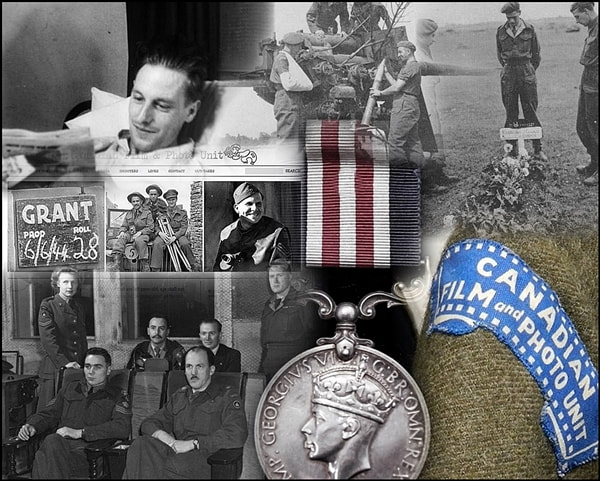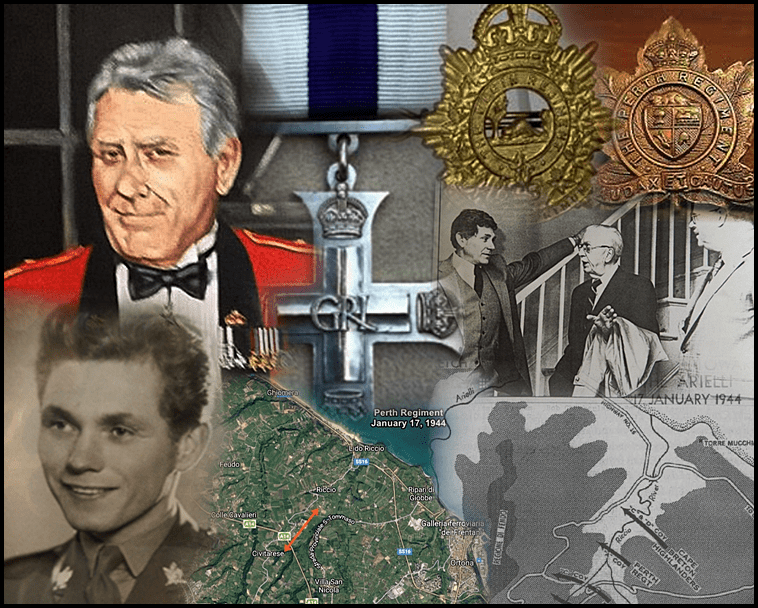|
As the Second World War moved into the final years, Canadians on the homefront were introduced to a new way to contribute to the war effort - by donating blood. The research by Dr. Charles Best and the Connaught Laboratories in Toronto produced a safe and convenient method for transferring the essential elements of blood in serum form to combat blood loss and shock on the front lines and military hospitals. In 1944 alone, Canadians contributed a million pints of blood destined for overseas. The St. Thomas Times Journal took the call for donations to their subscribers by illustrating how local serving men benefited from the life saving gift - they did not shrink from raising the curtain on the severity of the injuries that required such a donation. Captain Wynne Baldwin (wounded during D-Day operations), Captain Jack Jennings, (member of the Devil's Brigade-lost a leg when taking Rome), and Corporal Frank Oke, (lost a leg in Normandy while serving with the Hussars) all take the time to attest to the life-saving properties of this Canadian research.
1 Comment
One Man's War - Shared with the Country Sgt. Jack Stollery, from St. Thomas, Ontario was one of a very few who got to share his war with the whole country as an integral member of the Canadian Army Film Unit. While he also served on the Western Front, he was awarded the Military Medal for his exceptional service at the battle for Ortona in Italy. The English newspaper, the London Evening Standard put it this way on August 15,1944.
"Sgt. Jack Arnold Stollery, a Canadian Army photographer, has been awarded the Military Medal for gallantry which inspired the troops taking Ortona in Italy, says Reuter. The citation said: "During the entire battle for the town his gallant conduct and devotion to duty was outstanding. His appearance with the forward troops in moments of great danger armed only with a camera was commented upon and was in no small way responsible for bolstering the morale of the fighting troops. Throughout the whole campaign, Sgt. Stollery has continually displayed great gallantry and devotion beyond the call of duty." After the war, Jack spent some time with the National Film Board in Ottawa before returning to St. Thomas where he set up a photography business. Sadly, he died suddenly in 1974 at only 57 years old. Lt. Colonel Robert S. Chamberlain, MC, C St. J, CD - A lifetime of service with the Perth Regiment with whom he served during WW II winning the Military Cross in Italy; the Elgin Regiment as Honorary Commanding Officer for 15 years, and with the Elgin Military Museum (seen above with Lt. Col. Ed King (centre) and Lord Elgin (right) in the Museum in the early 1980s).
A” Squadron, With Good
Men and True, Moved Fast, Far Along the Italian Front Was in the Initial Assault on Gustav and Hitler Lines; Worked Part of Time as Unit Under British Command. Kept Constantly on Move During Winter of 1943-44 By Major E.G. King Commanding “A” Squadron, Elgin Regiment During the Italian campaign, doing the east coast the first winter and then starting from below Cassino and finishing up in the foothills of the Northern Apennines. And, if I were asked to name one of the busiest men in the Squadron during our Italian interlude I think I would nominate Trooper Doug Keith, the postal clerk. The amount of mail that passed through his hands was large and usually about 90 per cent of it had to be re-addressed, which meant a lot of work for one man – but Doug did a good job of it. Elgins Left Old Syracuse |
AuthorThe Elgin Military Museum has a vast collection of letters, articles, poems and pictures of veterans and others who served their community over a period of two hundred years.. This blog is our way of sharing them with you. Archives
April 2020
Categories
All
|


 RSS Feed
RSS Feed